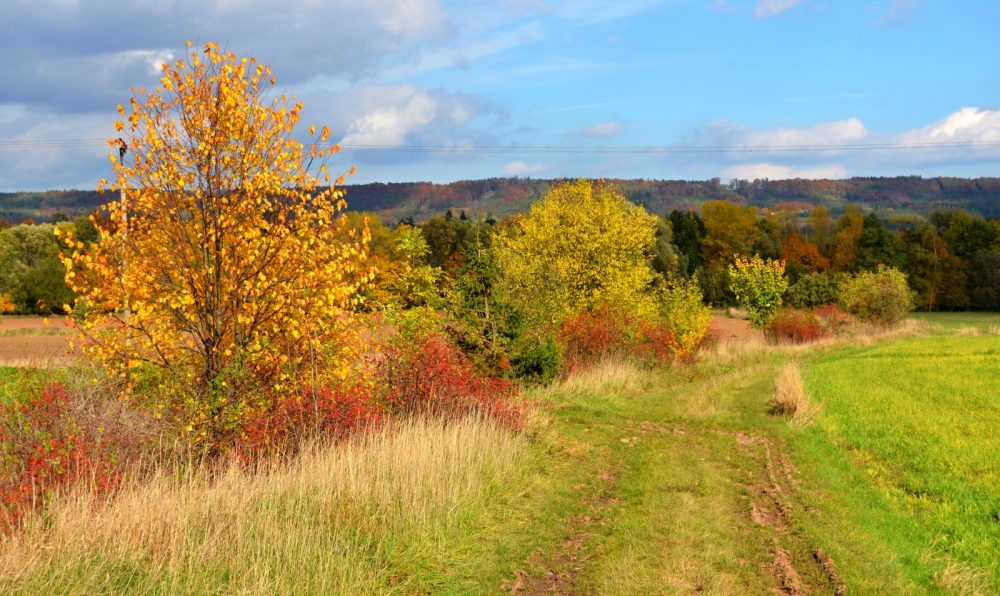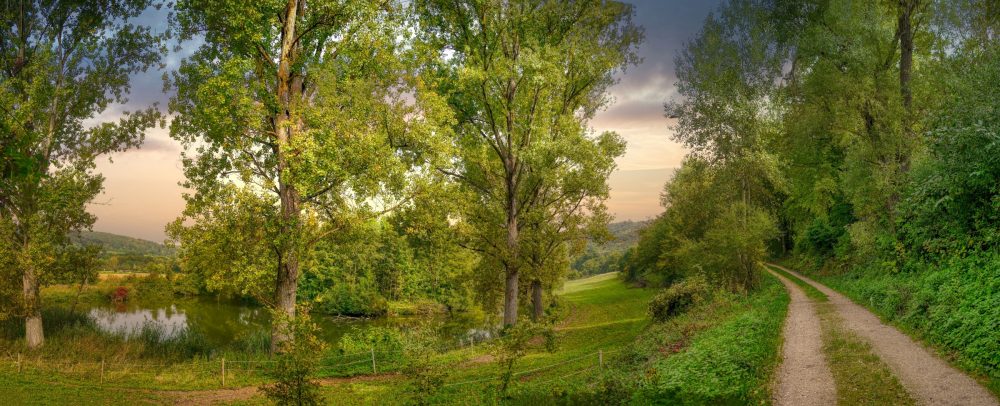How should the Czech landscape look like in order to better resist to climate change?
Agroforestry is probably the oldest way of land use and it has been associated with the domestication of plants and animals, since time immemorial. The essence is the simultaneous use of land for agricultural production and the cultivation of tree species, i.e., simply put, the integration of tree species into the agricultural landscape. Knowledge about agroforestry in temperate climates is relatively little, and there is very little information from the Central European area. In the Czech Republic, this previously common practice has disappeared.
A prerequisite for the successful application of agroforestry can be, for example, the benefits of joint cultivation of crops and trees. Nevertheless, agricultural culture and trees also compete with each other. In the Czech landscape, there are fragments of woody vegetation, such as field balks with trees, windbreaks or riparian vegetation, which are worthy of attention and which deserve to be explored in more detail for their significance in the landscape and the interrelationships of individual elements.
Scientists from the Opočno Research Station, FGMRI, focused their research on the field balks (belts) with trees. They published their results in the paper Influence of tree species plant belts on the production and species composition of grassland and environmental properties, which was published in the journal Forest Research Reports 3/2022.
 Research trial was established in the foothills of the Orlické hory Mts. (Eagle Mountains) in the cadastral territory of Velký Uhřínov at an altitude of 590 m. Vegetation conditions indicate there forestry use lasting until the World War II. From its end, grazing took place here, and the less sloping parts were ploughed. Since the 1980s, there have only been unfertilized meadows. In the place of the strips of trees, a slight terrain break originating from the previous historical plowing of the soil (until 1948) is visible.
Research trial was established in the foothills of the Orlické hory Mts. (Eagle Mountains) in the cadastral territory of Velký Uhřínov at an altitude of 590 m. Vegetation conditions indicate there forestry use lasting until the World War II. From its end, grazing took place here, and the less sloping parts were ploughed. Since the 1980s, there have only been unfertilized meadows. In the place of the strips of trees, a slight terrain break originating from the previous historical plowing of the soil (until 1948) is visible.
In the Czech Republic, there prevails agriculture, which maximizes production through mechanization of work and intensive care for soil fertility. Agroforestry systems cannot directly compete with this type of land use. The priority orientation to production is also probably the reason why there has historically been a retreat from agroforestry in temperate zones.
The fear of an increase in the amount of complex work, costs and bureaucratic burden, this is the significant argument against agroforestry practices. Frequent reasons for the removal of woody vegetation from land are included in the understanding of tree species as obstacles to mechanization and, indirectly, the setting of subsidy support, or farmers‘ lack knowledge about possible connections with animals and crops.
The problems of the benefits of a wider application of agroforestry returns again. in current reflections how the Czech landscape should look like in order to better withstand climate changes The re-introduction of agroforestry systems in the temperate climate zone is important in the convergence of production and environmental functions of the landscape. As the target goal, it should be a transformation of landscape into a rich mosaic-like structure composed of individual landscape elements.
The environmental benefits resulting from the existence of agroforestry systems are the reason why farmers should establish and operate such methods of management on their land. Smaller farmers perceive the environmental benefits of agroforestry. Proposals regarding the new agricultural policy also provide for subsidies to support agroforestry.
Important environmental impacts of the application of agroforestry include, for example, the storage of carbon in the biomass of tree species, or soil protection and water protection functions. Agroforestry systems also contribute to meeting the wood demand of a growing human population.
The advantage of combined land use, it is the concurrence of production functions that support the sustainability of farming, environmental functions supporting biodiversity, and also the preservation of a cultural, aesthetically functional landscape.

The studied extensive agroforestry system near Velký Uhřínov meets these parameters, for example, also thanks to the possible diversification of the rotation period of individual components in tree species belts; as typical extreme cases can be mentioned hazel providing sustenance for animals (biodiversity) and fuel (production), as well as sycamore maple with regard to the production of quality assortments, which represents a long-term investment.
Besides that, the studied locality is composed not only from an annual and a perennial part, but of two mosaic-like arranged permanent parts such as a permanent grass cover and a permanent belt of tree species.
Agroforestry systems can be advantageously applied in similar locations. As the goal, it can be the support of more environmentally friendly farming practices, the improvement of conditions both in climate or terrain extreme habitats, or purely financial profit resulting from production of exceptionally high-quality wood, representing a long-term investment for farmers.
Paper „Influence of tree species plant belts on the production and species composition of grassland and environmental properties ” was prepared during the solution of the project QK1810415 “Influence of tree species composition and structure of forest stands on microclimate”.
Paper can be downloaded here.
Authors: Jan Bartoš, Ondřej Špulák, Dušan Kacálek, Jan Leugner, Jarmila Martincová, FGMRI, Research station Opočno, e-mail: bartos@vulhmop.cz
Prepared by Ing. Jan Řezáč, e-mail: rezac@vulhm.cz
Illustrative photo: examples of agroforestry managed landscapes
